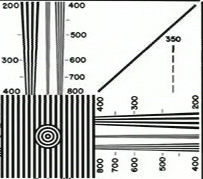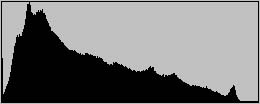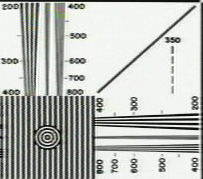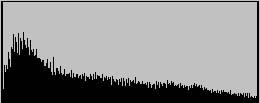

Image intensity histogram of full screen cats image, taken from Photoshop. Note that it covers the full range from 0 to 100% intensity.

Resolution detail: about 540 lines


Note histogram has shifted to the left.Also, the fullscreen image shrank slightly, picking up black bars at extreme left and right (about 4 pixels at left, and 6 at right) so image is 1.3% smaller horizontally. Both are probably analog adjustments which could be tweeked in the camera.

Resolution detail: about 480 lines.


Histogram quite similar to the direct analog transfer between DV decks. The Panasonic SVHS deck does not shift the intensity appreciably, although it does introduce a little noise.

Resolution detail: about 400 lines.


Histogram not shifted, but lighter features are spread out (more noisy) and the transfer curve looks funny near the black level.

Resolution detail: about 230 lines.


XING encoder enhances contrast relative to the LSX encoder. Many more pixels went to full black.

Resolution detail: about 260 lines.

